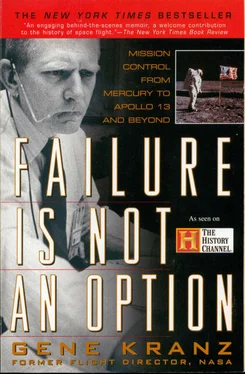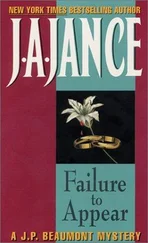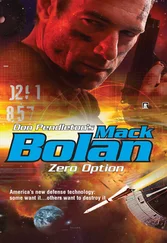With two programs, the computing services (not to mention our budget) were tight, and all computer runs were prioritized based on need and schedule. One afternoon I got a call from a computer operator asking if I had authorized some runs by Llewellyn. My response was short. “Not that I know of, but it is possible they are for his Earth resources project.” The operator said, “Gene, you better look at these. They are for a lunar trajectory that lands on the back side of the Moon.”
“There aren’t any sites on the back side,” I said, “and I don’t know what in the hell John is doing. Send the computer run requests up to the office.”
In short order, John was standing at attention in front of my desk. He was never one who stammered or tried to mince words. He came right at you, and you better be ready for every emotion except regret. John never apologized. He believed that offense was the best defense. I found it hard to keep a straight face as my judo partner proceeded to explain why he was studying landings on the back side of the Moon. As he talked he paced the room, gesturing wildly in patriotic fervor. “We think the program is pretty well fucked up. This cancellation of the rest of the Apollo missions is a bunch of shit, and we’re trying to do something about it.”
John both challenged me and piqued my curiosity. We stood nose-to-nose. “John, just who the hell is ‘we’?”
He ignored my question and continued, “Gene, can’t you see what the hell is going on? The pogues”—John’s favorite word for bureaucrats—“ are taking over and pretty damned soon there won’t be anything left of the space program. I know you had to put someone in this crappy job you gave me, but you better be aware that I am A RETRO first, and the section chief for Earth resources second!” John then stormed out. My office echoed from his shouting, and I still did not know what had set him off and what he was thinking.
An hour later, I received a visit from our geologist-astronaut, Jack Schmitt. He knocked on the door, politely walking into the office. “I understand you just had a talk with Llewellyn,” he said. Now I was really confused, but I was starting to suspect that I had uncovered something that Schmitt probably had started. My suspicion was confirmed when he said, “I’ve got a small study group going on alternate lunar missions. We meet after work in my apartment. I provide the refreshments.”
Jack Schmitt was the astronaut most like a member of the flight control team. He was a geologist, and the son of a geologist, who had explored Indian reservations in his native New Mexico as a boy. Jack had assembled some of the early composite lunar photographs while he was working in Flagstaff, Arizona. Accepted as a scientist-astronaut in 1965, he finished second in his class of fifty in Air Force flight school. At NASA, Jack helped develop the scoops, shovels, and other tools that were used to dig samples from the lunar crust.
Jack was unique, an intellectual with degrees from the California Institute of Technology and Harvard but with the soul of an adventurer. He was at every flight control party, celebrating each victory, big or small. A favorite of the controllers, he was one of the few astronauts who really put a few away at our parties—the others nursed their drinks. He was loud, effervescent, brash, not quite my image of the typical scientist. Schmitt seemed to have no limit to his interests, no end to his enthusiasms. He was an instigator who dropped a few well-chosen words in receptive ears and then let events roll on to what he knew would be a stormy, noisy, and wild conclusion. Currently without a mission assignment, Jack wanted to make sure that he got to the Moon, and the more missions on the schedule, the better his chances.
I went to Jack’s next study session and was not surprised at finding Llewellyn and a handful of my flight controllers and flight designers. As I watched them work, I had the impression they were a bunch of Boy Scouts setting up tents and starting campfires. It was the same impression I had had of a similar bunch when I joined the Space Task Group. It was crowded in the apartment and the cross-talk was lively. One moment they were busily sketching out mission options, and then debating the pros and cons of missions to the back side of the Moon for the final Apollo flights. The team believed that if we could pull off something spectacular, something that had never been done before, we might recapture the interest of the American public and get the canceled missions back in the program. After all, the space hardware was already bought and paid for, and the team did not want to let the Saturn boosters and capsules end up as displays in museums.
The risks involved in a back-side landing might well create compelling drama. The risks would again put the lunar program on the front pages of the newspapers, and for a few days we would capture the public’s interest. During a back-side landing, Mission Control could not give the crew any help. The crew would be on their own in a virtually uncharted world and, like the early explorers, living by courage and ingenuity alone.
We would not even know whether they landed or crashed until the CSM relayed the status a half hour later. These would be explorers like Byrd, Scott, Peary, and Cook. Schmitt’s team continued its work; Llewellyn got his computer time, and when I had a chance, I joined the discussions. I wondered if meetings like this had happened before the master mariner Christopher Columbus decided to find the Indies by sailing west.
The plan never had a chance, never got to the attention of NASA management, but Llewellyn, Schmitt, and their team members believed it was better to go down fighting than to meekly accept defeat. Schmitt wasn’t going to let the Apollo program come to an end without making sure that a real geologist set foot on the Moon. Mission Control, and the small group that worked in his apartment, cheered Schmitt the day he got his assignment to Apollo 17, the mission that would close the era of lunar exploration.
January 31, 1971, Apollo 14
Mission Control was a world bounded by math and physics, a world of statistics and probabilities. We were not superstitious, but we knew that every time we flew we were rolling the dice. We had beaten the odds on the last three missions. Probability said that someday we would run out of luck—as we almost did with Apollo 13. So we treated every mission as if it were our very first one.
I was out of the flight director rotation again. Frank, Griffin, Lunney, and Windler led the Apollo 14 teams. With a nod to the Wright brothers, the crew of Apollo 14 had named the spaceship the Kitty Hawk . Apollo 14 lifted off on the last day in January, headed for the Apollo 13 landing site, Fra Mauro. Alan Shepard, the first American in space, was the mission commander. Shepard had been scheduled to lead one of the first Gemini missions, but had been grounded by a rare inner ear disorder that caused severe vertigo. Like Slayton, he had been looking out for the interests of the astronaut corps. Then, in the summer of 1968, when he was partially deaf, he took a chance on experimental ear surgery to correct the vertigo and, against the odds, it worked.
There wasn’t enough time to get sentimental, but all of us shared the pleasure of Shepard’s comeback. Ten years earlier, while the nation watched and prayed and wondered, he soared into space in a capsule called Freedom 7 . In just fifteen minutes the ride was over, but we had opened the door to space just that much wider.
Now forty-seven, Alan’s appearance had changed little. He still resembled the actor Steve McQueen, and had a direct, no-nonsense, I-am-what-I-am kind of air about him. He always looked you right in the eye, and you felt he was looking right through you. (He would go on to become an admiral, one of the few who attained that rank without ever commanding a major ship. The list was small but distinguished, and two of the other names on it were the explorer Richard Byrd and Hyman Rickover, the pioneer of the nuclear submarine program.)
Читать дальше












